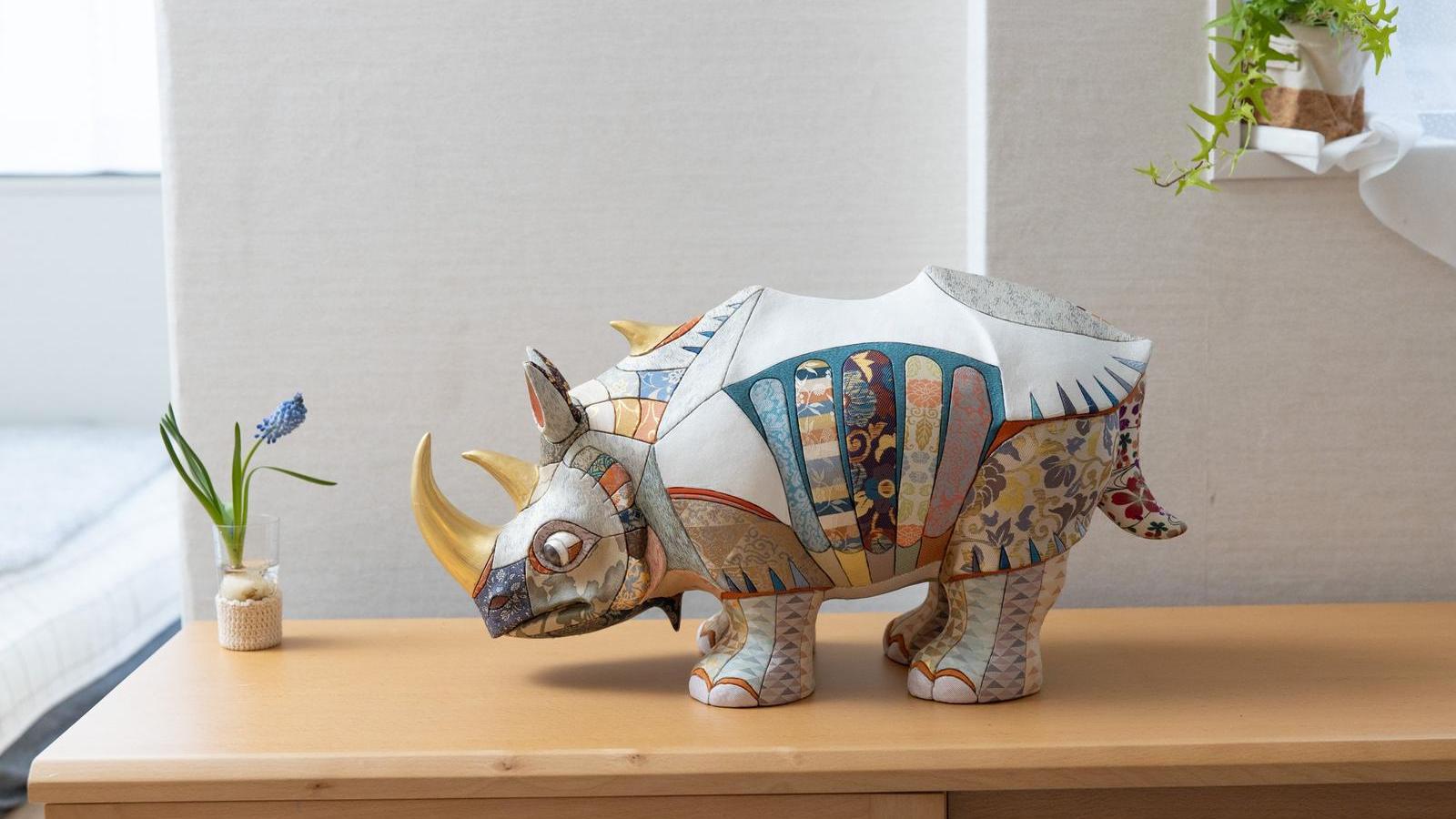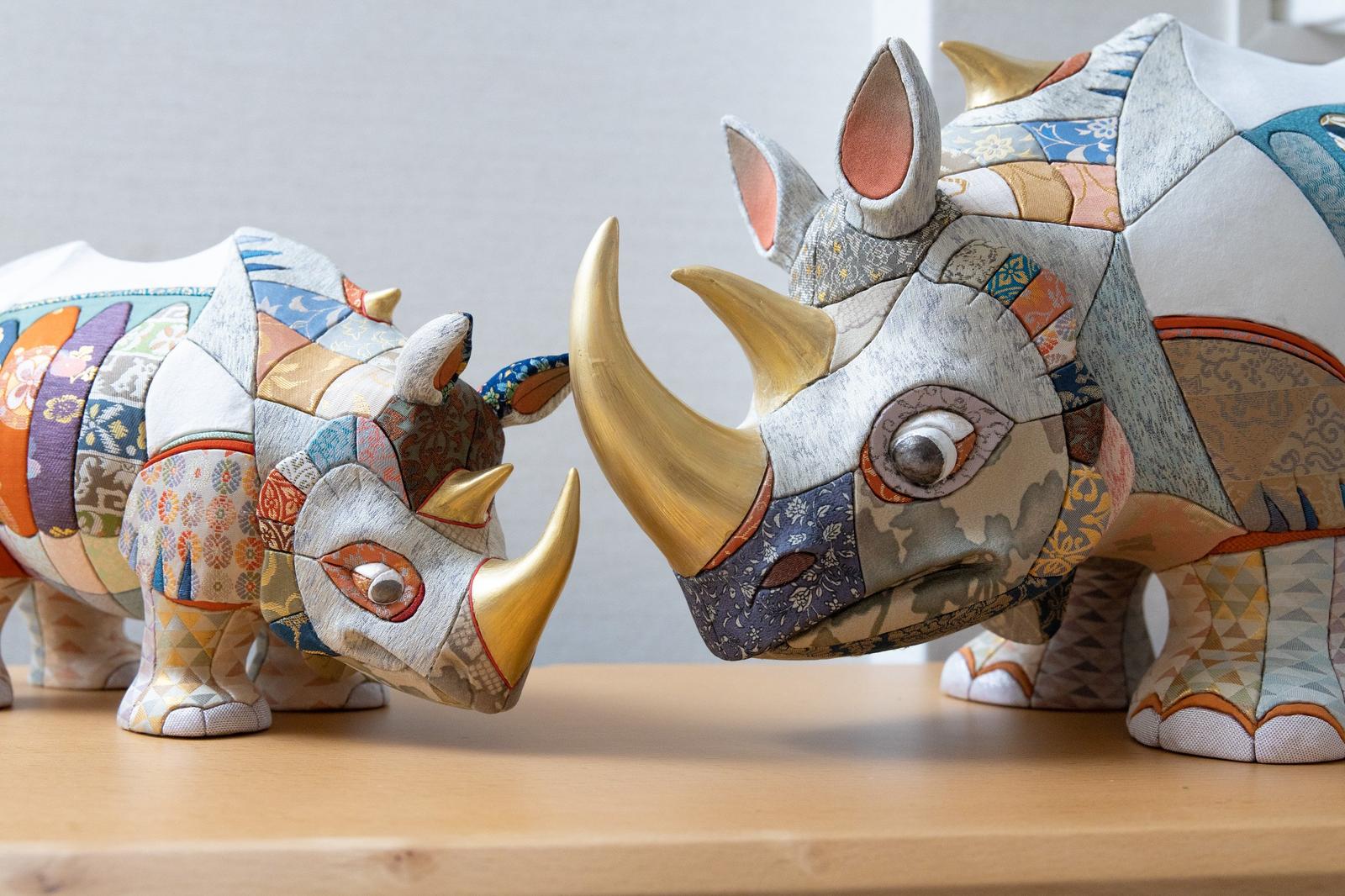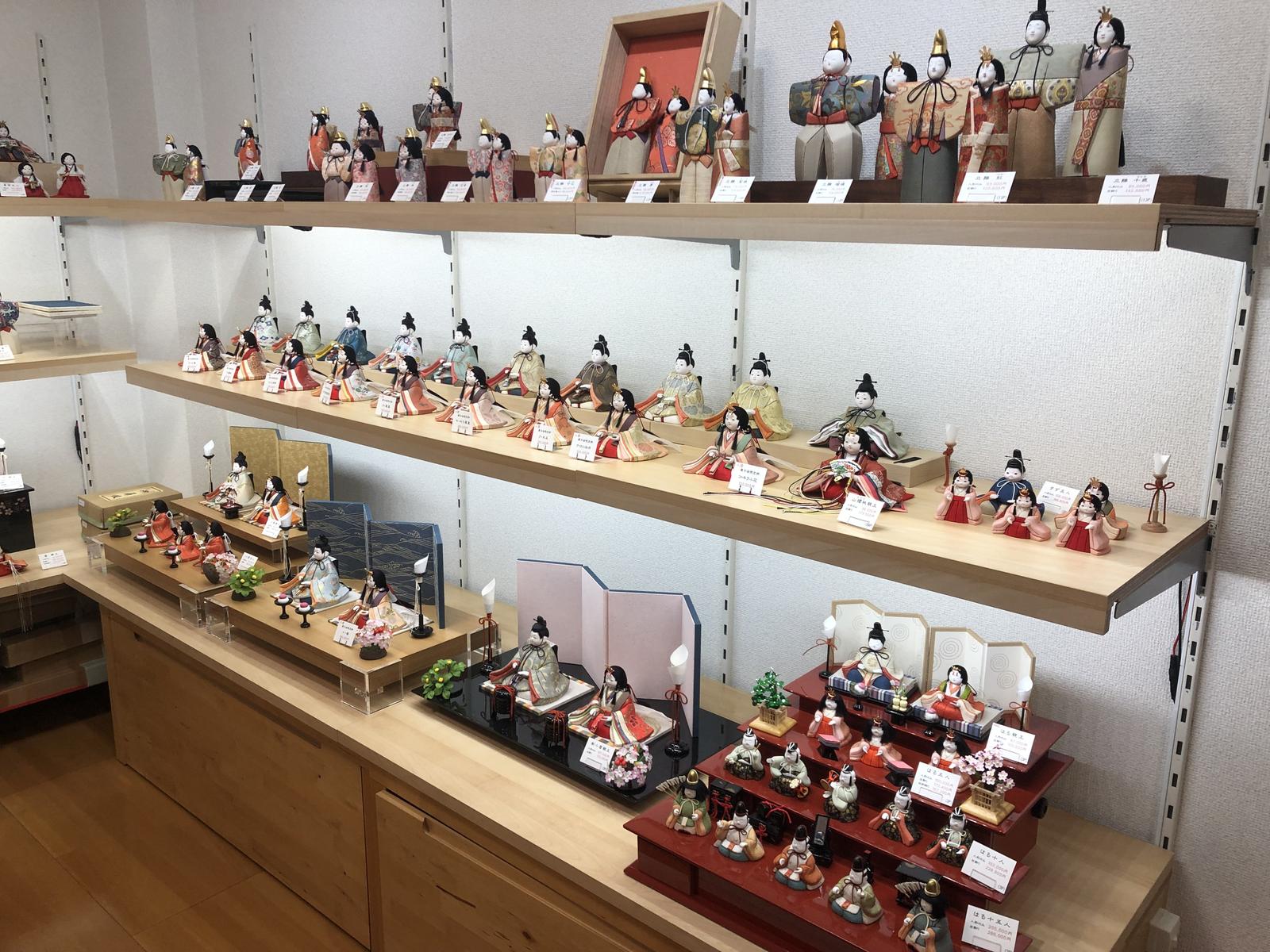The traditional craft of Sekku dolls as interior art

A patchwork of beautiful fabrics, rich in colors, adorn its body. The austere golden horns give off a sense of brutality, while the subtly charming eyes make you smile. This rhinoceros, whose presence makes itself strongly felt, is an animal figure in the "anima" series, announced in 2018 by Matsuzaki Doll, a long-established company that produces Sekku dolls. These dolls have won critical acclaim as interior art suitable for display all year round.
The inspiration for the creation of this product came from the advice of a foreign buyer who was looking for ways to develop overseas sales channels. After seeing a ceramic rhinoceros made by a sculptor friend of President Mitsumasa Matsuzaki in his office, he suggested that they try making something similar.
"My friend's work was a homage to Dürer's famous woodblock print of a rhinoceros. Unlike the real rhinoceros, this rhinoceros features armor-like skin. I thought that, if we tried the "kimekomi" technique that we use to make Sekku dolls, it would lead to an interesting, vibrant creation."
Kimekomi is a traditional method of doll making in which grooves are carved into the shaped wood, and a fabric called kireji is inserted into the grooves and glued down. Mr. Matsuzaki was also very selective when it came to choosing which materials to use. The kireji uses a gold brocade so valuable that it is hard to obtain, the white parts of the back and waist are covered with ultra-thin Japanese paper called tengujo, the eyes are finished with a black foil made from silver, and the horns are polished after applying gold paint using the same technique as for making Noh masks. In order to make the wood strong and smooth, gofun, a pigment made from seashells, is applied repeatedly, and just like in the making of dolls, a lot of time and effort is put into non-visible parts too.
"Using our mastery of traditional techniques, we were able to create something that has never been seen before. The bold color scheme should also add a sense of freshness to the traditional kireji."

In June of this year, "insectum", based on an insect motif, was released as the latest in the series. The idea came from an outside designer, who applied the kimekomi technique to a shape created using a 3D printer. The way it uses the design of an insect specimen for a paulownia wooden box case is also unique, and is sure to attract new fans.
"I want to cherish these new encounters and continue to expand the possibilities going forward. It is my dream to continue being able to create works that convey the joy of craftsmanship when people hold them in their hands."





